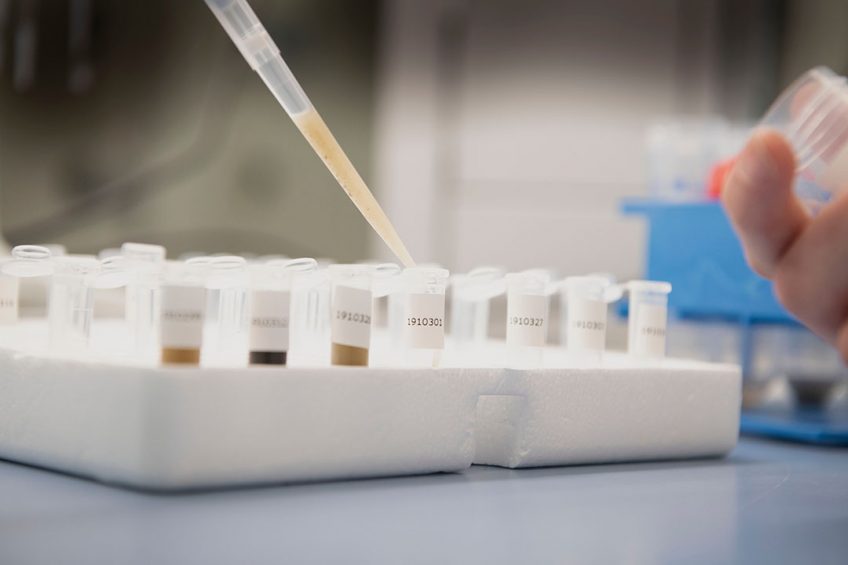European poultry projects to take share of research funding

Scientists from 5 European countries have been awarded funding to look at potential virulent non-notifiable avian influenza strains.
The FluNuance project is being led by immunologist Professor Dr Sjaak de Wit from Royal GD, Netherlands, and has support from research establishments in Germany, Hungary, Poland and the United Kingdom. Many non-notifiable AV strains using cause mild or moderate infections, but with highly variable mortality. High virulence, non-notifiable LPAIV’s are not predicted by intravenous pathogenicity index (IVPI) tests but can cause massive problems, such as the recent outbreak in Belgium, where an H3N1 strain classified as LPAI nevertheless caused more than 50% mortality and a 100% drop in egg production.
5 work packages
The project will consist of 5 work packages and will try to generate the tools and reagents needed to test molecular hypotheses for the unusual and age-dependent pathogenicity of the H3N1 virus that affected poultry in Belgium. It will also look at determinants of host-virus interaction indicative for altered virulence; evaluate the in-vivo pathogenicity of mutant H3N1 viruses in laying birds and young male and female chicks; and look to develop diagnostic tests to assess pathogenic potential of emerging LPAI viruses. “The project brings together leading avian infection groups from University and national veterinary institutes to focus their skills, tools and expertise on a problem of genuine concern and economic impact for the poultry industry.”
Rodent management for pig and poultry health
A team led by Professor Dr Herwig Leirs, from the University of Antwerp, has been awarded funding to look at future rodent management for pig and poultry health. The consortium includes representatives from Belgium, Germany, the Netherlands, Poland, and the United Kingdom. The Rodentgate project’s specific objectives are to document changes in diseases risk for pigs and poultry when classical rodent management around farms is prevented and rodent populations change in abundance or composition and to propose appropriate evidence-based and economically sustainable strategies for the ecologically-based management of rodents and rodent-borne infections around farms.
 5 top actions to prepare for winter avian flu
5 top actions to prepare for winter avian flu
Due to fears about the possible spread of bird flu by migrating birds from Russia and Kazakhstan, UK Chief Veterinary Officers have taken action.
Apart from eating and spoiling pig and poultry feed and damaging infrastructure in and around farms, rats are a considerable threat to animal health and One Health. They can cause direct stress on pigs and poultry but are mainly important carriers of pathogens, including economically significant diseases such as Swine dysentery, Aujeszky’s Disease, PCV2 and Encephalomyocarditis. Wild brown rats can also carry Influenza A and might act as an intermediate for the transmission of avian influenza between wild birds and poultry.
In the past, an important approach has been to use rodenticides. But concerns about their environmental safety has led to changes in the EU and national regulations restricting their use, posing new challenges to farmers. The project will investigate the rodent-related risks for animal health in the pig and poultry industry and how this might change with altered rodent control.
 Tips on rodent control for broiler farmers
Tips on rodent control for broiler farmers
Controlling vermin populations on broiler units is an integral facet of farm management, but the efforts applied by producers are often found to be ineffective.
ERA-NEt
The grants have been awarded as part of a large Horizon 2020 ERA-NET project on tackling infectious diseases of livestock. A total of 19 successful applications were selected for funding by the International Coordination of Research on Infectious Animal Diseases (ICRAD). Professor Melanie Welham, executive chair of the UK Biotechnology and Biological Sciences Research Council (BBSRC) – which put forward £2m into the research pot, said: “Livestock diseases threaten not only animal health but the integrity of food supply chains, with far-reaching consequences for public health and serious economic impacts upon agriculture and food producers.
“Through pan-European co-operation, researchers are coming together under this programme to meet these very real challenges.”












